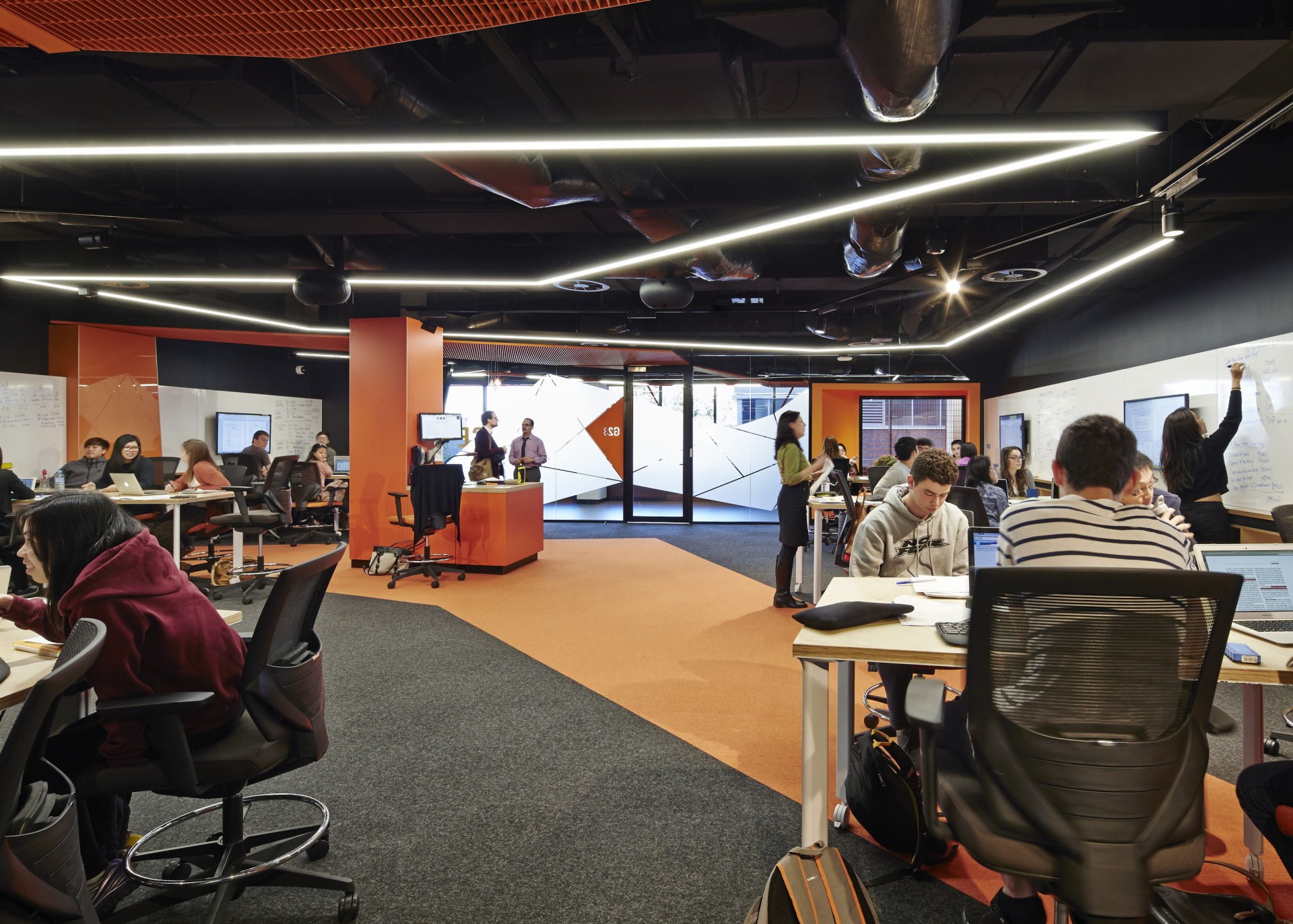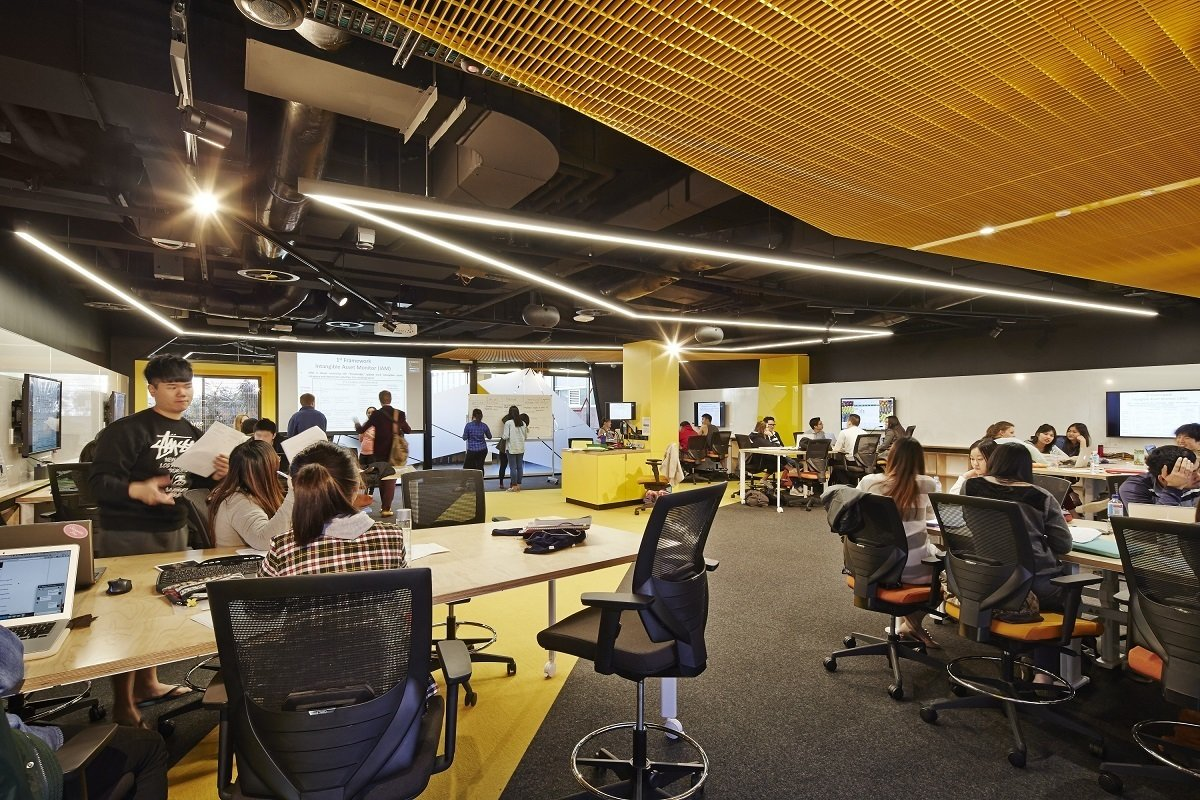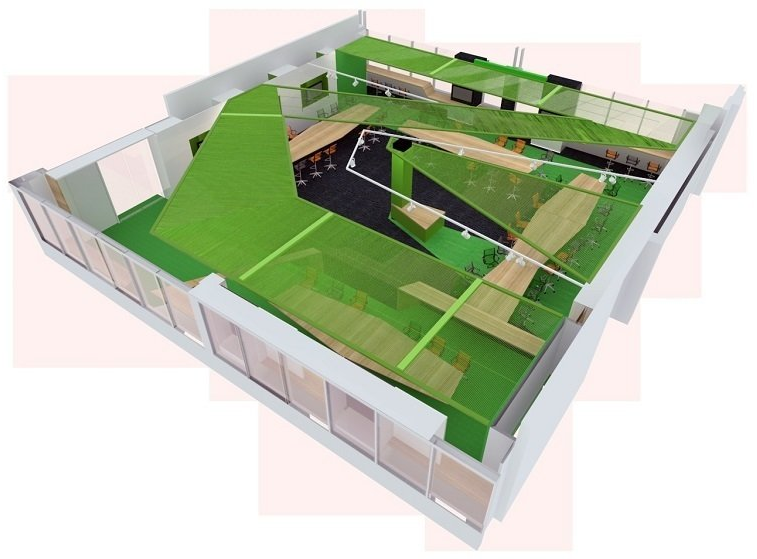
FLIPPED, BLENDED, AND ACTIVE LEARNING—WHERE CLASS TIME IS SPENT ON PROBLEM SOLVING AND GROUP LEARNING, INSTEAD OF LISTENING TO TEDIOUS LECTURES.
The education literature relating to "effective teaching and learning" paints a compelling picture of students benefitting from being active, interactive, and collaborative in the classroom. Students grasp new concepts and retain knowledge more effectively, as well as developing critical "soft skills" such as collaboration, critical analysis, and creative thinking.
Instead of receiving instructional content in class (that is, a lecture) and completing assignment work for homework, some teachers facilitate instructional content online for students to engage with before class. This has become known as the "flipped classroom" or "flipped learning." Students come to class ready to participate in a range of interactive and often collaborative activities.
“IT’S MUCH MORE ENTERTAINING AND INTERESTING. AND I FIND
THAT THE KNOWLEDGE STICKS A BIT EASIER COMPARED TO SITTING
THROUGH A TWO HOUR LECTURE AND THEN GOING HOME AND
HAVING TO DO THE TUTORIAL AND HAVING TO ESSENTIALLY
RE-LEARN THE CONTENT BECAUSE YOU WEREN’T PAYING ATTENTION
IN THE LECTURE. THIS IS A MUCH MORE EFFICIENT APPROACH AND IT
MAKES MORE FOR COLLABORATIVE LEARNING.”
– UNSW BUSINESS SCHOOL STUDENT
Blended learning combines the best of face-to-face learning with the best of online learning. This has resulted in greater emphasis on technology across campus; for example, from digital infrastructure within classrooms and libraries, campus saturation of Wi-Fi, cloud-based software, to the emergence of intuitive software.
The emergence of these new pedagogies has resulted in a reconceptualization of the university classroom and a new matrix of campus spaces. Tutorials & seminar rooms are being redesigned and branded as "active classrooms" to enable greater flexibility and greater choice of learning activities. Early studies indicate better student outcomes when engaging in active learning.
Informal learning spaces are being located in close proximity to active classrooms, to enable a continuum of learning from pre-class to in-class and post-class. Learning conversations and experiences extend beyond the classroom threshold.
Flipped Classrooms
The concept of a "flipped classroom" began as an empty box, with mobile tables and chairs. The idea was to embed all of the resources and technologies around the perimeter walls, including docking points for each table setting.

The learning activities enabled in the room are:
- collaborative or independent tasks
- other students can join another table to foster cross-group interaction
- each group can access technology
- each group can access writeable surfaces
- each group can work on a horizontal surface
- access to retreat spaces
- two tables can join together to form groups of 12 students
- all furniture can be easily reconfigured or removed altogether for events and social activities
- Each table setting was designed for six people, with access to a wall mounted screen, multiple power points for students to plug their devices into, and glass writeable surfaces. Tables were deliberately left free of encumbrances such as fixed PCs, to maximise the types of activities that could take place.
- Being able to see what other students in the room are doing is a critical characteristic of the flipped classroom, as it fosters curiosity and confidence. Students can see what other groups are working on, which can either validate their own direction or inspire curiosity as to why other groups are doing something different.
Informal Learning
The adjacency of informal learning spaces has become synonymous with new generation learning environments in the last fifteen years. With an increase in collaborative learning throughout many higher education programs, universities recognise that students need places where they can study, research, and produce collaborative content.
The proximity of Informal learning spaces adjacent formal classrooms promotes learning energy that commences before and/or after the timetabled event.
“ONE TEAM CAN LEARN FROM ANOTHER TEAM SOMETIMES FASTER
THAN THEY CAN LEARN FROM ME HAVING TO CONVEY THE INFORMATION
FROM ONE TEAM TO ANOTHER. SO IT TAKES ME OUT OF THE EQUATION.
IT HELPS YOU FOCUS ON WHAT YOU WANT STUDENTS TO LEARN
AND LETS YOU THROW OUT 90% OF YOUR SLIDES.”
– UNSW BUSINESS SCHOOL TEACHER
A variety of student activities need to be factored into the design of an informal learning space, from individual quiet study to small- and medium-sized groups with optional access to technologies. While some spaces can be quite noisy with collaborative study, students often moderate their own behaviour by undertaking quieter work in the lead up to exams.
UNSW Business School
The ground floor of the UNSW Business School was refurbished in 2014 to provide a 1400 m2 precinct of four flipped classrooms and two informal learning spaces. The space ratio is 56% formal and 44% informal space, with 70% floorplate efficiency. The entire precinct seats almost 300 people, including 2 x 60-capacity classrooms and 2 x 48-capacity classrooms.

design approach. A continuous ribbon-like motif flows
throughout the space, accentuating the linkages between
public central spaces and private study zones."
Conceived as "The PLACE" (Peer Learning and Creative Exchange), students watch or listen to online resources prior to attending class, then undertake collaborative projects in class. Teachers sometimes commence the class with a short presentation to contextualize the group activity and then roam the classroom to advise and assist students. The adjacent informal learning spaces are hives of activity as students prepare for class or continue their project work. Students can also access the flipped classrooms when they are not timetabled.
The precinct is notably brightly coloured with robust materials and dynamic forms, demonstrating an aesthetic that is far removed from the traditional institutional classroom. It is more nightclub than classroom, although does not compromise lighting comfort. In fact, the design deliberately enables furniture to be removed altogether, facilitating events such as movie nights, industry functions, or even a nightclub event.
The Business School captured some student and teacher feedback in a series of YouTube clips, including the above quotations, indicating that students are embracing the different learning experience that the flipped classrooms creates. 
This article was reprinted through the courtesy of Woods Bagot. Read the original article here. Topmost image: the UNSW Australian School of Business by Woods Bagot.

